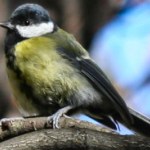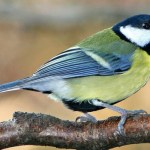The tl:dr... don't sleep late.
great tit
Image of male great tit from BBC Nature News.
A new study published in Ecology Letters suggests that shy male great tits build stronger bonds with birds in their own flock. This population of birds has been studied in Wytham Woods, near Oxford, UK since 1947.
In case you are wondering, the team determined "shyness" and "boldness" by capturing birds and placing them in a novel environment for 10 minutes. Shy birds were slow to explore the new environment whereas bold birds explored it quickly. The birds were then tagged and tracked using radio transmitters. The researchers…
tags: evolutionary biology, behavioral ecology, molecular ecology, personality, novelty seeking, exploratory behavior, dopamine receptor, dopamine receptor D4 gene, DRD4 gene polymorphism, ornithology, birds, Great Tit, Parus major, researchblogging.org,peer-reviewed research, peer-reviewed paper
Bold or cautious? Individuals with a particular gene variant are very curious --
but only in some populations.
Image: Henk Dikkers.
Research suggests that personality variations are heritable in humans and other animal species, and there are many hypotheses as to why differences in personality…
tags: evolution, evolutionary biology, evolutionary ecology, plumage color,carotenoid-based colour, carotenoids, lipid peroxidation, oxidative stress, sperm motility, sperm quality, sperm velocity, birds, ornithology, Great Tit, Parus major, researchblogging.org,peer-reviewed research, peer-reviewed paper
Great Tit, Parus major.
Image: Luc Viatour, Creative Commons/Wikipedia [larger view]
In some species of birds, males are more brightly colored than females. This phenomenon is due to female choice: females choose to mate with males that have the brightest plumage colors and most…
When food is precious, animals can resort to strange behaviours in order to satisfy their hunger. Take the great tit. Its usual diet of insects and creepy-crawlies is harder to come by in winter. But in one Hungarian cave, great tits, ever the opportunists, have learned to exploit a rich and unusual source of food. They kill sleeping bats.
Great tits are only about 5 inches long, but their prey - the pipistrelle bat - is smaller still, just an inch or two in size. The bats spend the winter months hibernating in rock crevices. They're well hidden, but when they wake up, they start making…
tags: Great tit, Parus major, birds, mystery bird, bird ID quiz
[Mystery bird] Great tit, Parus major, photographed in Helsinki, Finland. [I will identify this bird for you tomorrow]
Image: GrrlScientist, 24 November 2008 [larger view].
Please name at least one field mark that supports your identification.
Rick Wright, Managing Director of WINGS Birding Tours Worldwide, writes:
Chickadees all look alike: chubby, rather long-tailed little birds with fluffy plumage, big heads, and black-and-white faces. In North America, our chickadees are a colorless lot, only Chestnut-sided straying from…

